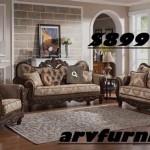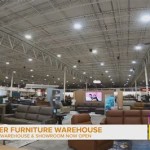Mid-Century Modern Furniture Repair: Preserving a Design Legacy
Mid-Century Modern (MCM) furniture, characterized by its clean lines, organic shapes, and functional design, remains highly sought after. As vintage pieces age, repair becomes necessary to maintain their aesthetic appeal and structural integrity. Addressing these repairs requires a blend of knowledge, specialized skills, and an understanding of the materials and construction techniques prevalent during the mid-20th century. This article explores essential aspects of MCM furniture repair.
Identifying Common MCM Furniture Damage
A crucial first step in the repair process involves accurately identifying the type and extent of damage. Common issues include veneer damage, joint instability, upholstery wear, and finish deterioration. Each type of damage necessitates a specific repair approach. Veneer, often used on MCM furniture, is susceptible to chipping, lifting, and bubbling due to changes in humidity and temperature. Joints, particularly on chairs and tables, can loosen over time, compromising stability. Upholstery fabrics fade, tear, or stain, impacting both appearance and comfort. Original finishes, typically lacquer or varnish, can become scratched, discolored, or develop visible wear patterns.
Before initiating any repairs, careful examination of the piece is essential. This includes noting the wood species, construction methods, and any original markings or labels that might provide insights into the piece's history and construction. Photography is recommended to document the initial condition and track the repair progress. This documentation can be invaluable for future reference and for communicating the repair process to clients or potential buyers.
Accurate identification of the damage allows for a tailored repair strategy. For example, minor veneer chips might be addressed with color-matched wood filler, while larger areas of missing veneer require replacement with a carefully selected and applied veneer patch. Loose joints may necessitate disassembly, cleaning, and re-gluing with appropriate adhesives. Upholstery repairs range from simple cleaning and stain removal to complete reupholstering, depending on the condition of the fabric and underlying structure.
Essential Techniques for Restoring Wood Finishes
Restoring wood finishes on MCM furniture requires a delicate balance between preserving the original character and addressing signs of wear and tear. The choice of technique depends on the type of finish, the extent of the damage, and the desired outcome. Common finish types found on MCM furniture include lacquer, varnish, and oil finishes. The appropriate repair method varies depending on the finish used.
Before any refinishing is attempted, the furniture should be thoroughly cleaned to remove dirt, grime, and old wax buildup. A mild detergent solution and soft cloth are typically sufficient for this purpose. Stubborn residue may require the use of a specialized furniture cleaner. After cleaning, the surface should be allowed to dry completely before proceeding.
For minor scratches and imperfections, a touch-up approach may be sufficient. This involves using furniture markers or crayons that closely match the original finish color to conceal the damage. For deeper scratches or areas of discoloration, a more involved approach may be necessary. This might involve lightly sanding the affected area, applying a color-matched stain or toner, and then applying a protective topcoat of lacquer or varnish.
In cases where the finish is severely damaged or deteriorated, a complete refinishing may be required. This involves stripping the existing finish, sanding the wood smooth, applying a new stain or toner, and then applying several coats of a protective topcoat. Stripping the finish requires careful use of chemical strippers or controlled sanding to avoid damaging the underlying wood. The choice of stain and topcoat should be carefully considered to match the original finish as closely as possible.
When applying new finishes, it is essential to follow the manufacturer's instructions carefully and to use appropriate safety precautions, such as wearing gloves and a respirator. Thin coats of finish should be applied, allowing each coat to dry completely before applying the next. Light sanding between coats can help to create a smooth, even surface.
Addressing Structural Issues in MCM Furniture
Structural integrity is paramount in furniture repair. Loose joints, broken legs, and damaged frames compromise the functionality and safety of MCM pieces. Addressing these structural issues requires a systematic approach involving careful assessment, appropriate materials, and precise techniques.
Loose joints are a common problem in MCM furniture, particularly in chairs and tables. These joints often rely on mortise-and-tenon or dowel constructions, which can weaken over time due to glue failure or wood shrinkage. Repairing loose joints typically involves disassembling the joint, cleaning away old glue, and re-gluing with a high-quality wood adhesive.
Before re-gluing, it is essential to ensure that the joint surfaces are clean and free of any old glue residue. This can be achieved by scraping, sanding, or using a specialized glue solvent. The adhesive should be applied evenly to both surfaces of the joint, and the joint should be clamped securely until the glue has fully cured. It is important to use clamps that are appropriate for the size and shape of the joint, and to protect the wood from damage by using padding between the clamps and the furniture.
Broken legs or frame members require more extensive repairs. In some cases, it may be possible to repair the broken piece using wood glue and clamps. However, in other cases, it may be necessary to replace the broken piece entirely. When replacing a broken piece, it is important to use wood that is the same species and grain as the original, and to carefully match the shape and dimensions of the original piece.
When repairing or replacing structural components, it is essential to use appropriate joinery techniques to ensure a strong and durable repair. This may involve using mortise-and-tenon joints, dovetail joints, or other traditional joinery methods. The choice of joinery technique will depend on the specific requirements of the repair and the overall design of the furniture.
Reinforcing repaired areas is often necessary to ensure long-term stability. This can be achieved by adding metal brackets, wood cleats, or other reinforcing elements. These reinforcements should be carefully integrated into the design of the furniture so that they are not visually obtrusive.
Proper clamping is crucial for ensuring strong and durable repairs. When gluing joints or broken pieces, it is important to use clamps that are appropriate for the size and shape of the repair. The clamps should be tightened securely, but not so tightly that they damage the wood. The glue should be allowed to cure completely before removing the clamps.
Upholstery Considerations for MCM Furniture
Upholstery plays a significant role in the overall look and feel of MCM furniture. Repairing or replacing upholstery requires careful consideration of fabric selection, construction techniques, and adherence to the original design intent. The original fabric often defines the piece, and replicating the original or choosing a historically appropriate alternative is crucial.
When assessing upholstery damage, it is important to consider the condition of the fabric, the underlying padding, and the frame. Common problems include tears, stains, fading, and worn padding. In some cases, it may be possible to repair small tears or stains. However, in other cases, it may be necessary to replace the entire fabric.
Selecting the right fabric is crucial for maintaining the aesthetic integrity of the furniture. Original upholstery fabrics from the MCM era often consisted of durable materials such as wool, linen, and vinyl. When replacing the fabric, it is important to choose a material that is similar in appearance, texture, and durability to the original. Historical accuracy will maintain the integrity of the piece.
Padding materials also play an important role in the comfort and appearance of upholstered furniture. Original MCM furniture often used natural padding materials such as horsehair, cotton batting, and foam rubber. When replacing the padding, it is important to choose a material that is appropriate for the style and intended use of the furniture. High-density foam is a common choice for its durability and comfort.
Upholstery techniques used in the MCM era were often characterized by clean lines, tailored details, and precise stitching. When reupholstering a piece of MCM furniture, it is important to adhere to these techniques as closely as possible. This may involve using specialized tools and equipment, such as a sewing machine with a walking foot and a pneumatic staple gun.
Proper attention to detail is essential for achieving a successful upholstery repair. This includes accurately measuring and cutting the fabric, carefully fitting the fabric to the frame, and using appropriate stitching techniques to create clean, crisp seams. The placement of buttons, welting, and other decorative elements should also be carefully considered. Fasteners must be appropriate and strong for a lasting repair.
Ethical Considerations in MCM Furniture Repair
Ethical considerations are paramount when repairing MCM furniture. Maintaining the historical integrity of the piece while addressing damage presents a delicate balance. Transparency with clients regarding the extent of repairs and the use of original versus replacement materials is crucial.
Prioritizing conservation over complete restoration is a key ethical principle. Whenever possible, repairs should be aimed at stabilizing the original materials and preserving the original finish, rather than completely stripping and refinishing the piece. Minor imperfections that do not compromise the structural integrity or aesthetic appeal of the furniture can be left untouched, as they contribute to the furniture's character and history.
When replacement materials are necessary, they should be carefully selected to match the original materials as closely as possible. This includes considering the wood species, grain pattern, finish type, and upholstery fabric. If original materials are no longer available, historically appropriate alternatives should be used. It is important to document any replacement materials used in the repair process.
Respecting the original design intent is another important ethical consideration. Repairs should be carried out in a way that preserves the original design and functionality of the furniture. This may involve consulting with experts or researching historical documentation to ensure that the repairs are accurate and appropriate.
Transparency with clients is essential throughout the repair process. Clients should be informed of the extent of the damage, the proposed repair plan, and the estimated cost and timeline. They should also be informed of any decisions that are made regarding the use of original versus replacement materials. Open communication builds trust and ensures that the client is satisfied with the final result.
It is also important to be mindful of the environmental impact of furniture repair. Whenever possible, sustainable and eco-friendly materials and techniques should be used. This includes using water-based finishes, recycled or reclaimed wood, and natural upholstery fabrics. Responsible disposal of waste materials is also essential. These small considerations add up to have a large impact.

The Filthiest Mid Century Table Gets Refinished Furniture Restoration Repair

Mid Century Modern Furniture Restoration That S Pretty Beginner Friendly Too

Mid Century Modern Chair Furniture Werks Repair And Restoration

Quality Mid Century Teak Furniture Restoration Wood Putty And Finish Repair How To

Put Down That Paint Brush And Other Tips From An Mcm Furniture Restoration Expert Atomic Ranch

Mid Century Console Cabinet Restoration Effie Row

Veneer Repair Color Matching Mid Century Modern Furniture Restoration Surprise Challenges

Mid Century Modern Teak Restoration Essential Tips

Mid Century Console Cabinet Restoration Effie Row

Mid Century Modern Furniture Repair


